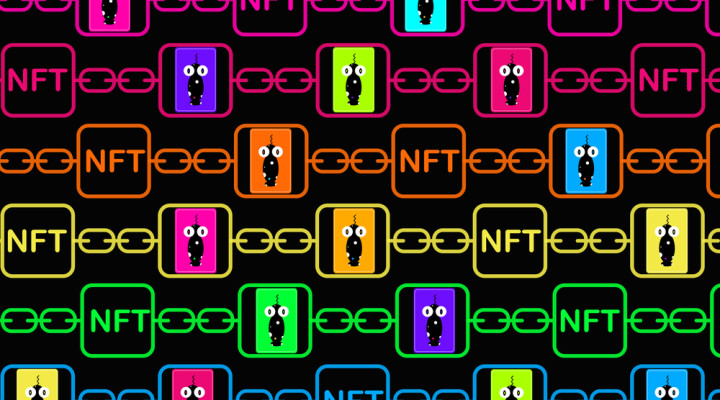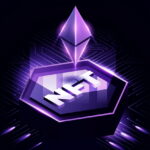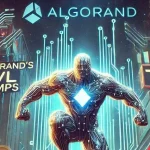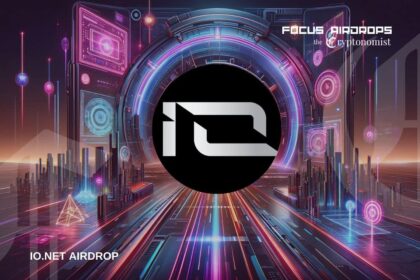As we move into 2025, NFT (Non-Fungible Token) technology is rapidly evolving beyond digital art and collectibles. Innovations in blockchain scalability, AI-generated NFTs, augmented reality (AR), metaverse integrations, and real-world applications are reshaping the NFT landscape.
NFTs are no longer just speculative assets—they are transforming gaming, finance, healthcare, intellectual property, real estate, and digital identity. This article explores the most groundbreaking NFT technologies expected to dominate in 2025.
1. The Next Generation of Blockchain for NFTs
1.1. Layer-2 Scaling Solutions
One of the biggest challenges facing NFTs has been high gas fees and slow transaction times. In 2025, Layer-2 solutions will dominate, making NFT transactions faster, cheaper, and more efficient.
Example: Ethereum 2.0, Polygon, and Optimism are expected to improve transaction speeds by 100x while reducing energy consumption.
Key Features of Layer-2 Scaling:
- Lower transaction costs.
- Faster minting and transfers.
- Greater accessibility for mainstream users.
Illustration: A futuristic NFT marketplace powered by a high-speed Layer-2 blockchain.
1.2. Cross-Chain Interoperability
In 2025, NFTs will become truly cross-chain, meaning users can transfer assets seamlessly between Ethereum, Solana, Binance Smart Chain, Avalanche, and Polkadot.
Example: A cross-chain NFT bridge could allow a player to use the same NFT sword in multiple games across different blockchains.
2. AI-Powered NFTs: The Rise of Smart Digital Assets
2.1. AI-Generated NFTs
Artificial Intelligence (AI) is revolutionizing NFTs by creating dynamic, self-evolving assets. AI-generated NFTs can change, adapt, and grow based on real-world events or user interactions.
Example: An AI NFT that evolves based on market trends, user behavior, or environmental data.
Key Use Cases:
- AI-generated music, art, and stories that continuously evolve.
- Dynamic NFTs that update in real-time based on sports scores or stock prices.
Illustration: A digital NFT artwork that changes its appearance over time using AI.
2.2. AI Chatbots & NFT Avatars
AI-powered NFTs will introduce interactive virtual beings that users can own and train. These avatars will be capable of learning from interactions and responding intelligently.
Example: Imagine owning an AI-driven NFT assistant that provides financial advice or creates custom art upon request.
3. NFT Gaming & Metaverse Innovations
3.1. Play-to-Earn (P2E) Evolves into Own-to-Earn (O2E)
The Play-to-Earn (P2E) model, which allows gamers to earn real money through NFTs, is shifting towards Own-to-Earn (O2E).
Example: In 2025, NFT landowners in The Sandbox and Decentraland will earn passive income from advertisements, in-game businesses, and renting out virtual properties.
3.2. NFT Game Interoperability & Cross-Game Assets
Gamers will be able to use the same NFT character, weapon, or skin across multiple games.
Example: A cyberpunk jacket NFT could be worn in Fortnite, The Sandbox, and GTA 6 Metaverse.
Illustration: A futuristic character wearing an NFT outfit used across different gaming worlds.
4. Augmented Reality (AR) & NFT Integration
4.1. AR NFTs for Fashion & Collectibles
NFTs will move into augmented reality (AR), allowing users to “wear” digital clothing and accessories in real-world environments.
Example: Snapchat, Instagram, and TikTok filters will support AR NFTs, allowing influencers to showcase digital outfits.
Illustration: A person wearing an AR NFT hoodie in a real-world setting, visible through AR glasses.
4.2. AR NFT Real Estate
Real-world properties will have NFT-backed digital twins, allowing buyers to tour properties virtually before making purchases.
Example: AR NFT real estate platforms will let buyers preview homes, apartments, and office spaces before committing.
5. NFT Ticketing & Real-World Applications
5.1. NFT Event Ticketing & Memberships
NFTs will eliminate ticket fraud and scalping, ensuring secure and verifiable access to concerts, festivals, and sports events.
Example: Coachella’s NFT lifetime passes grant holders VIP access to all future events.
5.2. NFT Identity & Digital Passports
NFTs will store secure digital identities, acting as passports, driver’s licenses, or proof of qualifications.
Example: Universities may issue NFT diplomas stored on blockchain to prevent fraud.
Illustration: A futuristic passport with an NFT-based identity verification system.
6. Challenges & Risks for NFT Technology in 2025
6.1. Regulatory Concerns & Intellectual Property
Governments are still figuring out NFT taxation, copyright, and security laws.
Example: The EU and US are drafting NFT-specific regulations to prevent fraud and money laundering.
6.2. Sustainability & Energy Efficiency
Blockchain networks are moving toward eco-friendly consensus models to reduce energy consumption.
Example: Ethereum 2.0, Solana, and Tezos are leading the push for green NFT solutions.
7. Conclusion: NFTs in 2025 & Beyond
NFT technology in 2025 will go beyond collectibles, integrating into gaming, finance, real estate, fashion, and identity verification. With advances in AI, AR, cross-chain compatibility, and sustainability, NFTs will play a vital role in our digital lives.










